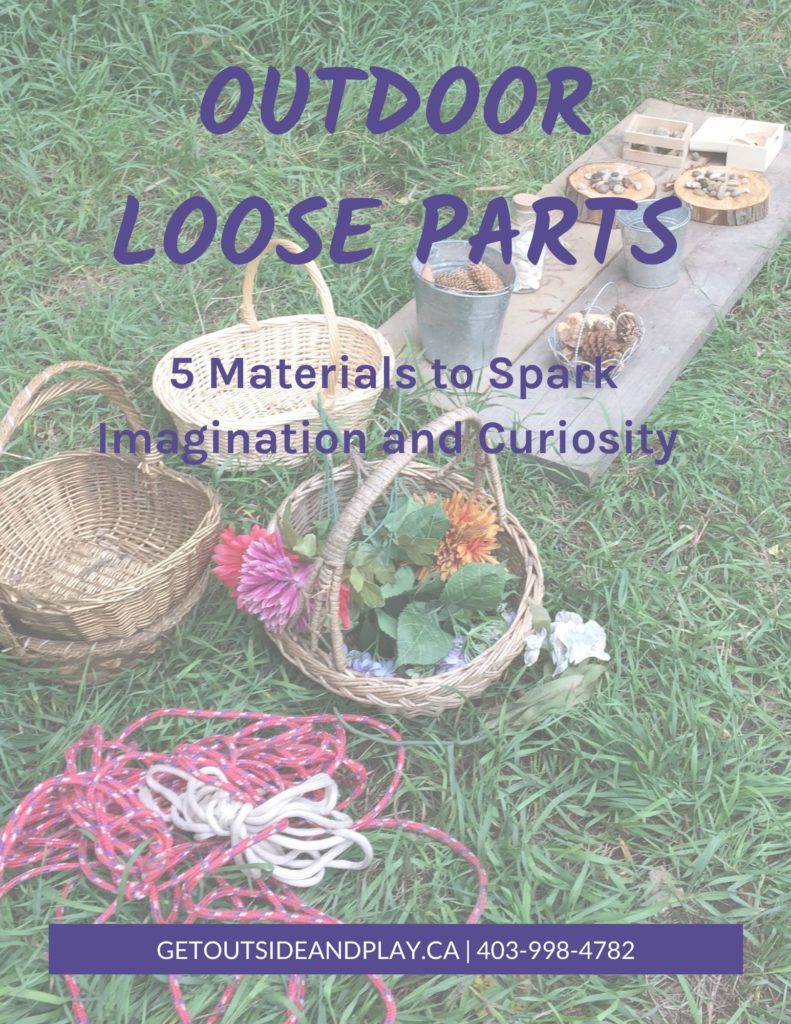Outdoor Loose Parts Storage Ideas
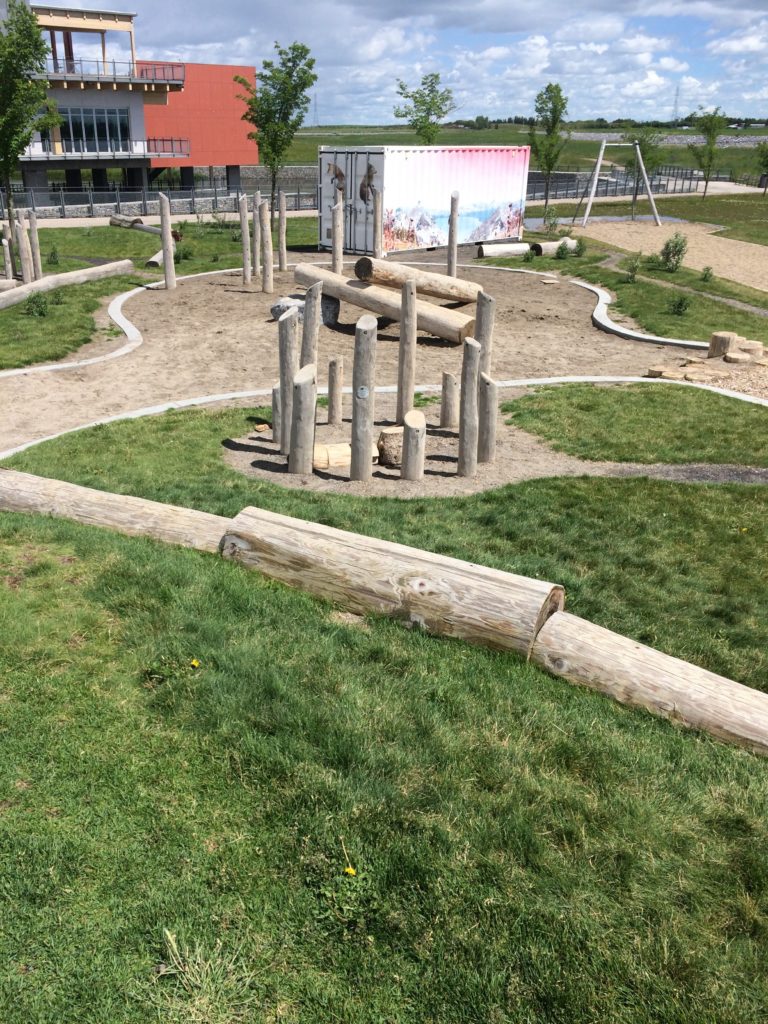
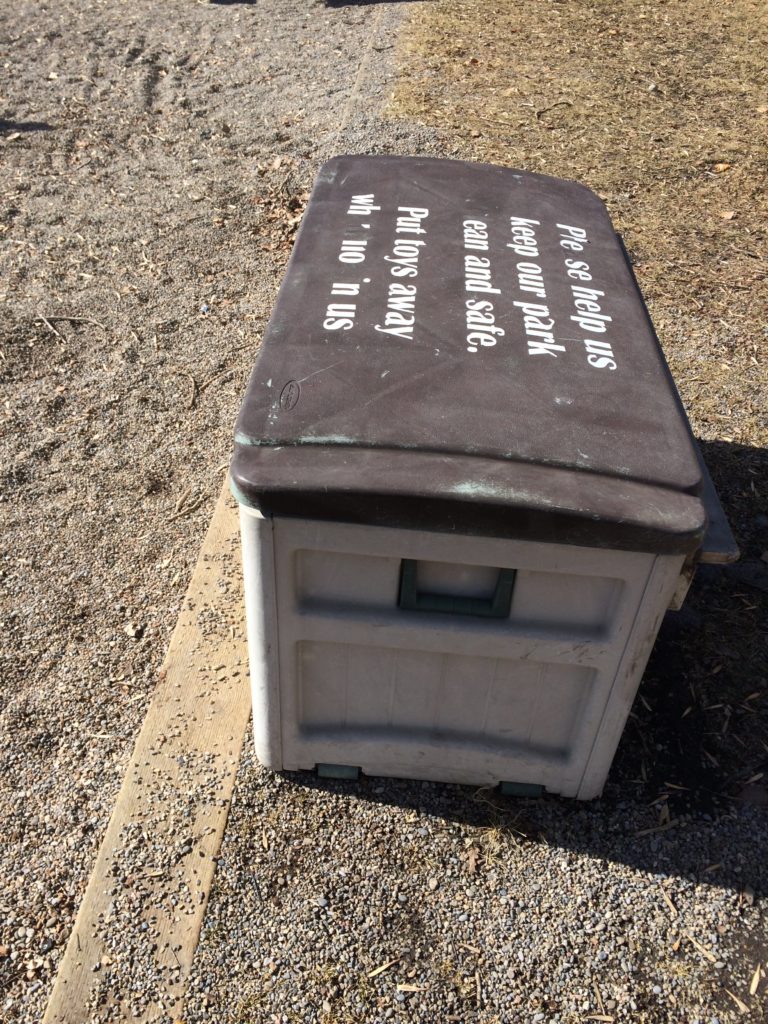
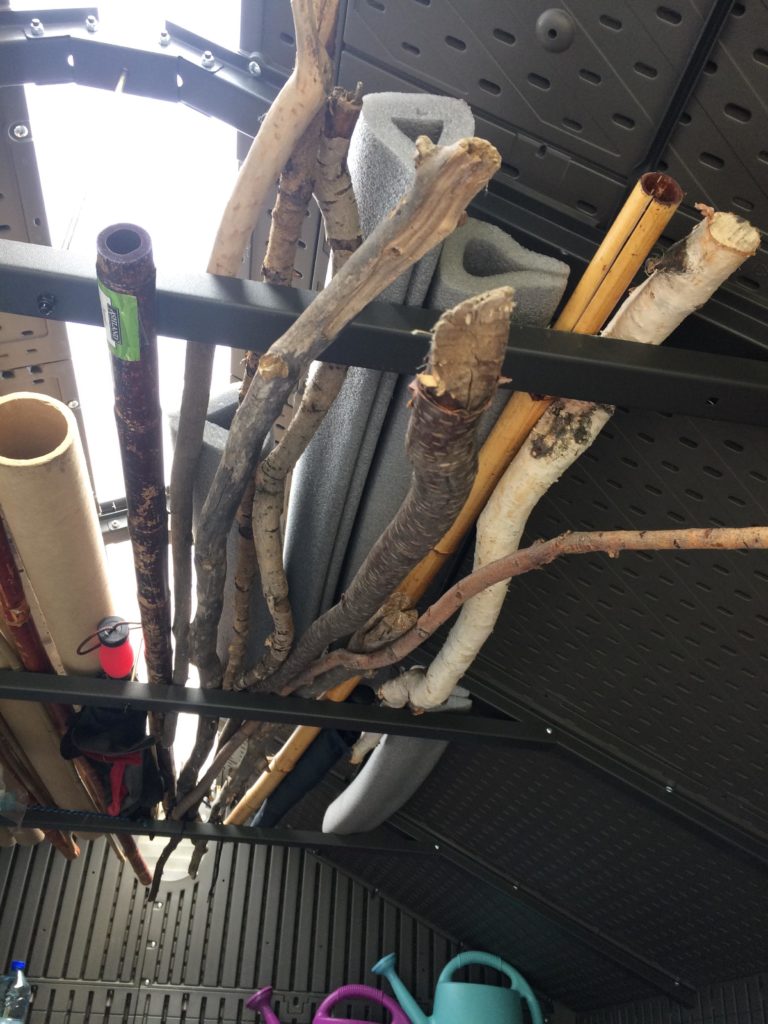
Weird shapes and random stuff make loose parts amazing for play but a challenge for storing. Depending on your setting you will have different things to consider like are you using public or private land, who has access to your space and maintenance concerns to name a few. Here I share a few permanent storage ideas I have come across in various settings, I hope seeing what others are doing inspires you to try something new! My next blog will look at ideas if you aren’t able to leave loose parts outdoors and need to transport them inside everyday.
I would love to add more ideas to this page! Do you have storage solutions that have worked well in your setting? Send me a picture and your top tips and I will add it.
The Shed

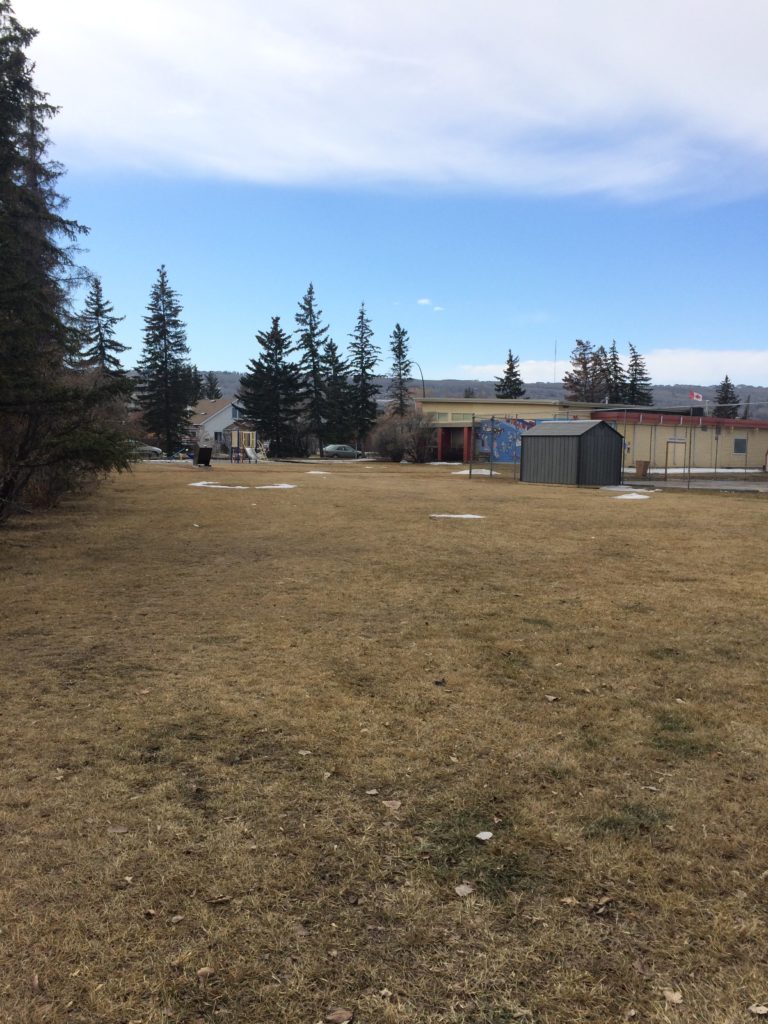
Bowmont Community Preschool runs its program out of the Irish Cultural Centre in Calgary Alberta. Their outdoor space is a small city park 30 seconds from their building. A few years ago, after much back and forth with the city parks department, they received permission to put a permanent shed in the park (this journey will be a topic for another blog!).
Shannon Stewart, the owner operator of Bowmont, offers the following shed advice:
- Have a large shelf with storage underneath for bins
- Use the roof inside the shed to store long, light items like sticks. It can be reinforced with bundgie cords to make a type of net.
- Mount a pallet to the wall to hold sticks and large tubes.
- Small items like zip ties, tape, rope, paper, bubbles, art supplies need their own smaller storage bins as they get lost in the large bins. This also allows educators to find items quickly as needed.
- Use the door of the shed to hang documentation.
- Store fabric, poles and fasteners together for ready den building.
- If your shed is in a public space, consider choosing a shed with windows as potential vandals or opportunists will take one look in the windows and see nothing of ‘value’ and hopefully not break in!
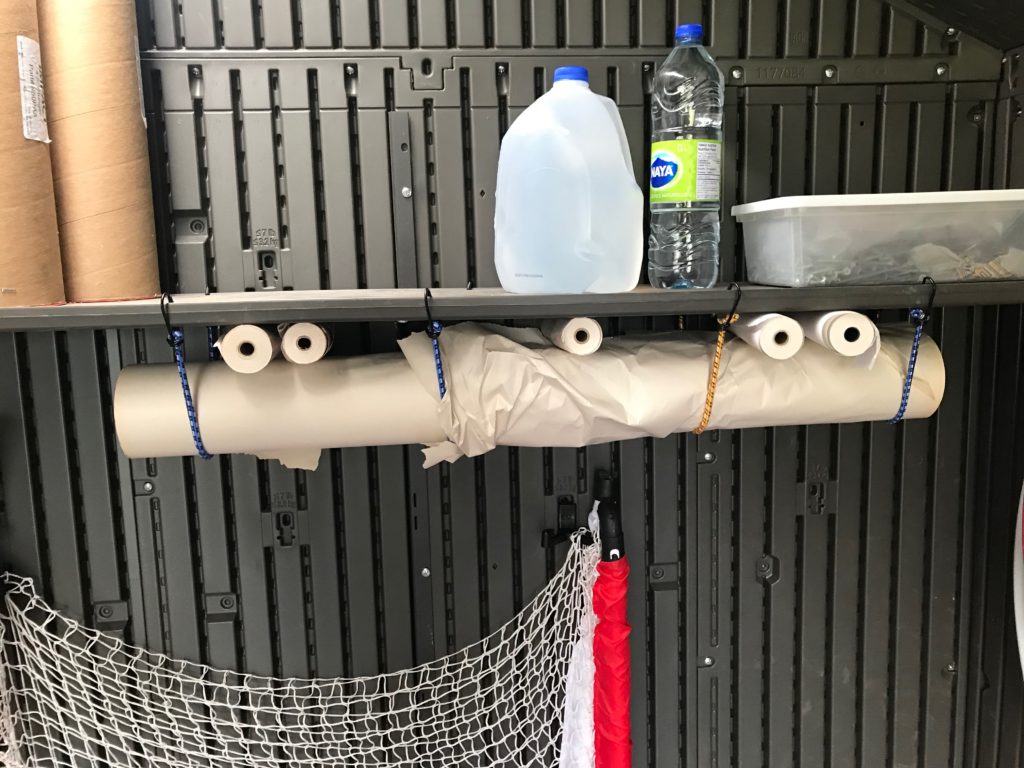
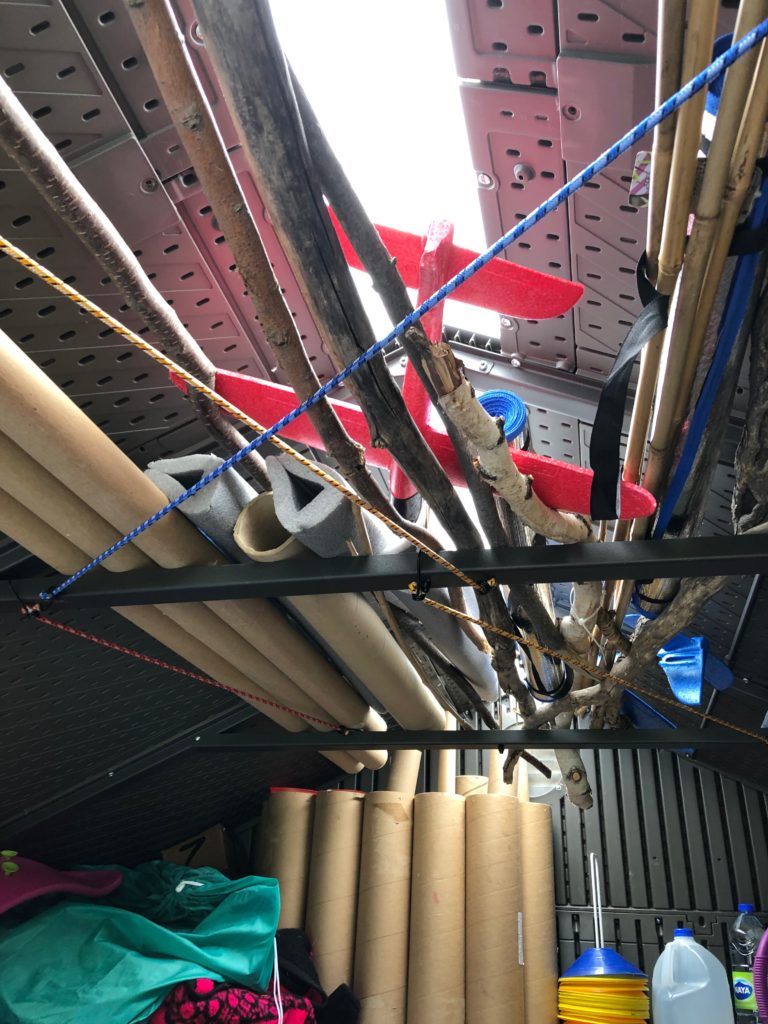
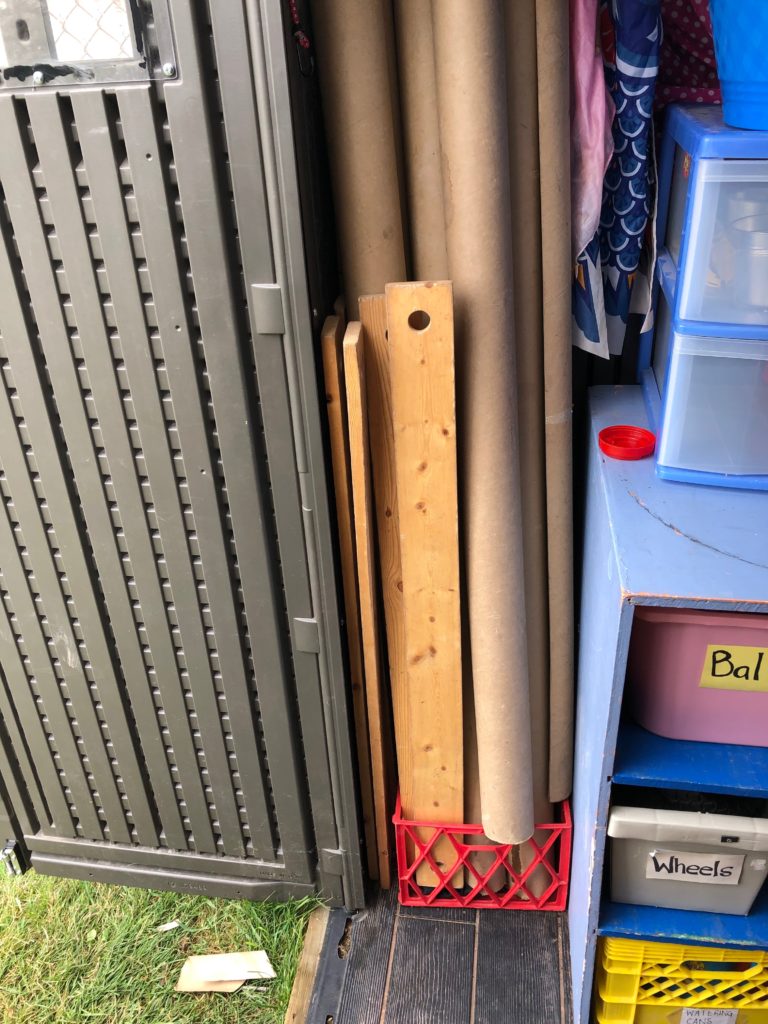
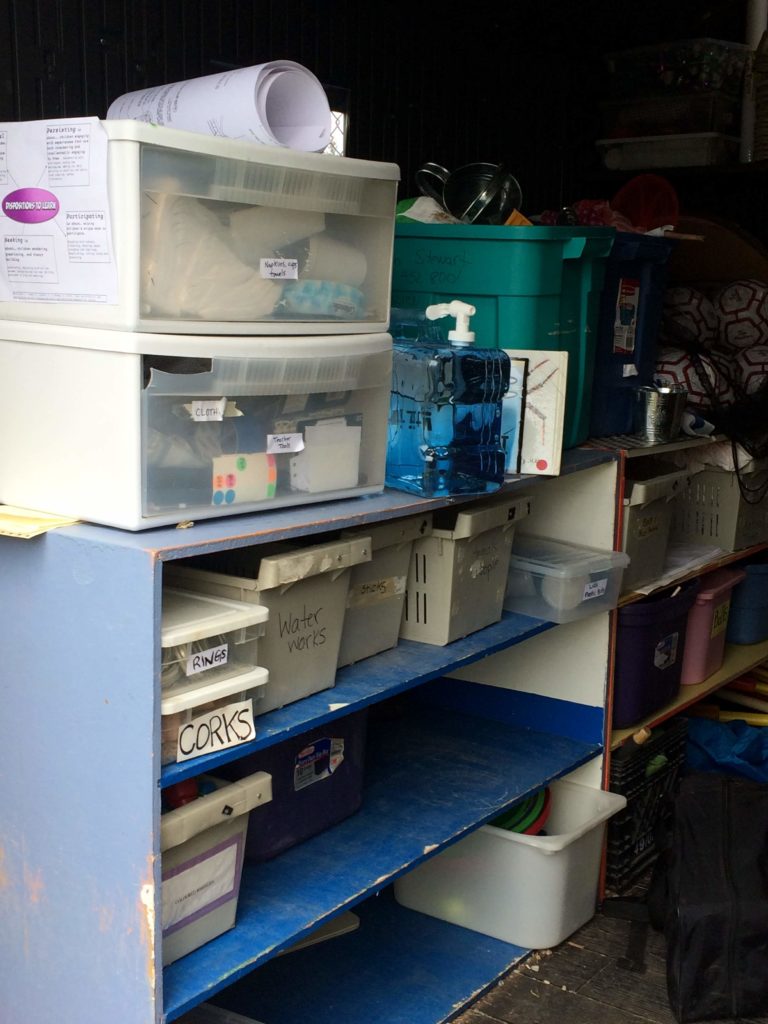
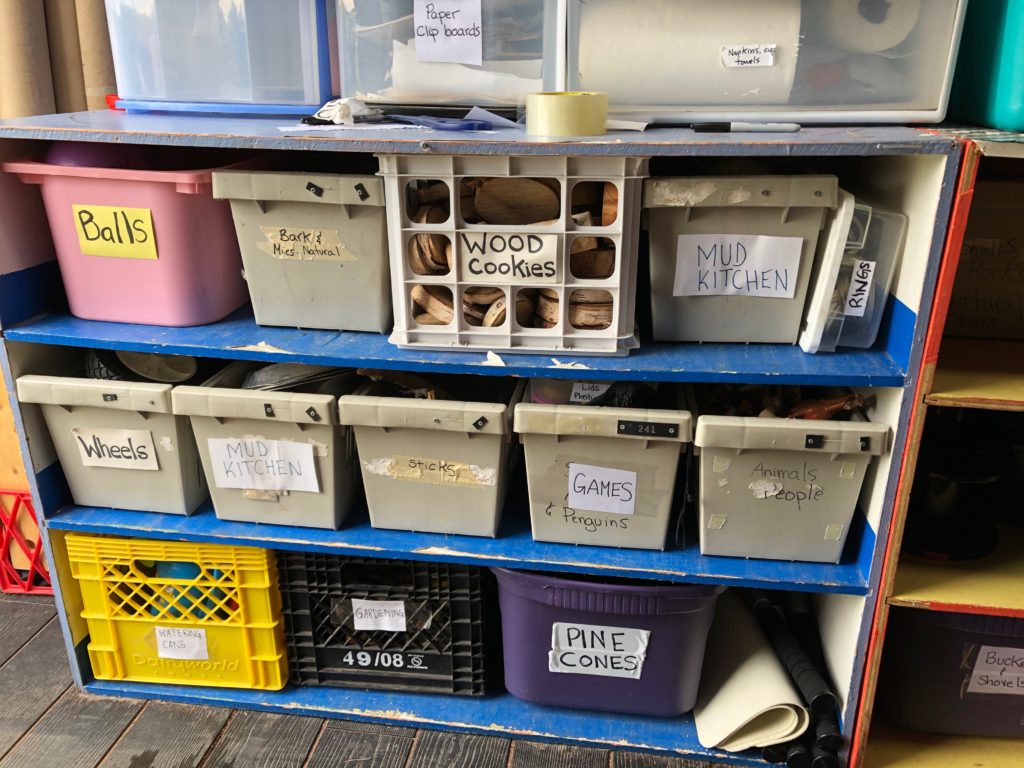
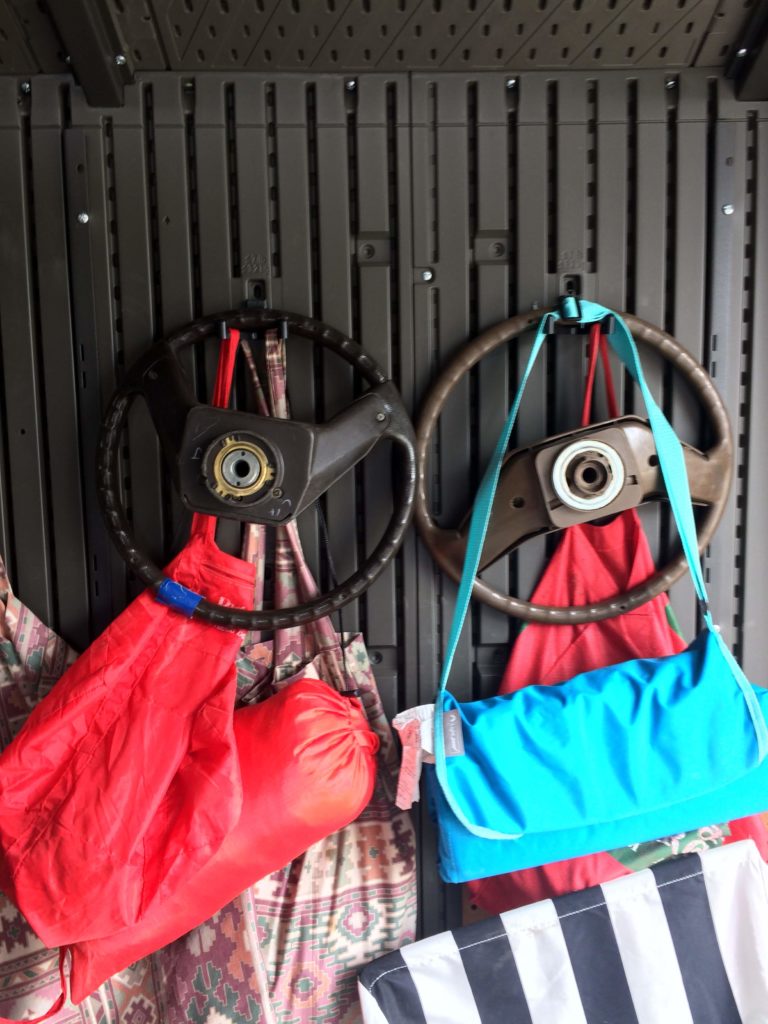
Wooden Boxes
Glenora Child Care Centre in Edmonton has been pushing the limits with their loose parts for many years. Last time I was there they had a real lawnmower (non-functioning) and dolly that were big hits with the children!
They have a private, fenced space so are able to leave these bins out all the time. What I appreciated about their storage was that is was all accessible to the children at the right height and the pictures helped children find and return the items to the proper bin. An important feature of this storage is it drains so water won’t accumulate.

Leena Priestley the Operations Director at Glenora had the following advice to share:
- If using wood, seal it. These original unsealed wooden bins did not stand up to the weather over time.
- Items in the shed are often forgotten by the educators and children. Leave as much out as you can.
- Ensure materials you leave out are sturdy and can endure harsh weather conditions.
- Spread storage out throughout your space, it encourages different use in different areas.
- Educators on the closing shift became frustrated with the huge amount of clean up. To support this, all four rooms are outside together (pre-Covid) for the last two hours of the day and before staff leave for the day they help clean the space by putting away materials not being used. This reduced the clean up left to the closing staff.
Sturdy Plastic Box
I came across this storage in a public park. I assume it was initiated and maintained by the residents of the neighbourhood. It was a sturdy, simple box that got the job done. Now they need to add some more loose parts along with the toy trucks! The simple message on top of the box was effective and direct.

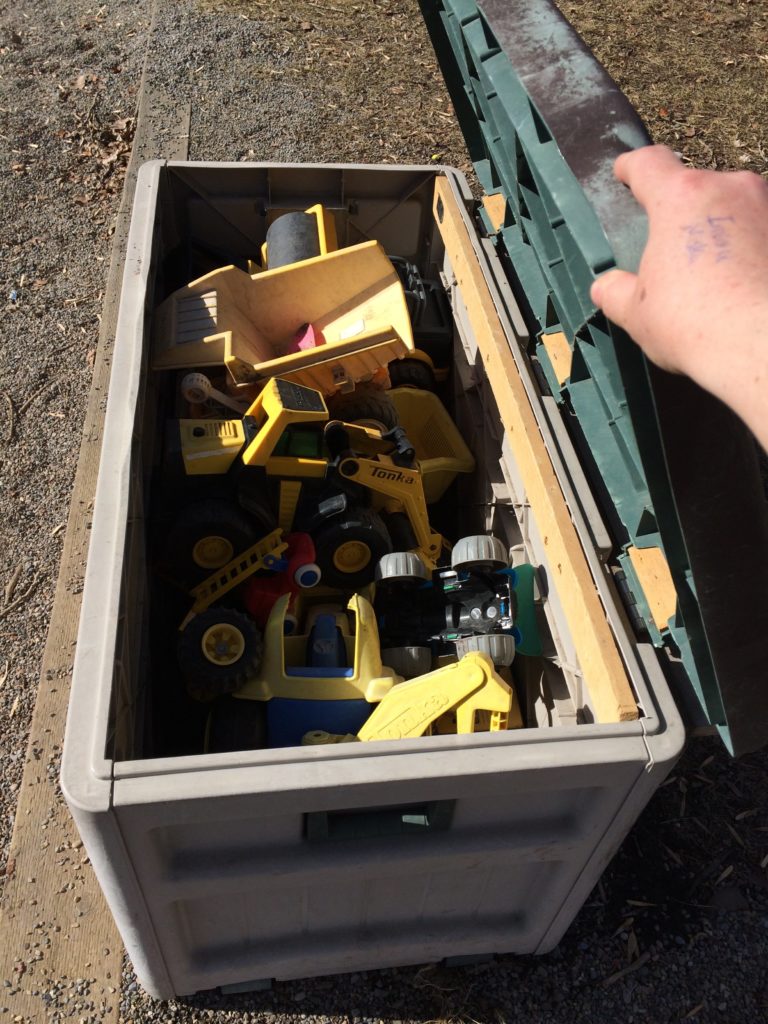
Shipping Container
Now this is sturdy storage! I have come across shipping containers in two locations, both public spaces where the containers are only opened by staff. Shipping containers come in different sizes to fit your needs and space. I don’t have any pictures of the inside of these examples but shelving and organization would be important to keep these large storage spaces from getting out of control! Perhaps the subject of another blog!
Anthony Burke, Team Lead and Play Guru with the Vivo Play Project offers the following advice for loose parts storage:
- Put the time into organizing it, do not bury items or you won’t be playing with them.
- Bungie cords will make your life easier
- Use the vertical space (walls and ceilings)
- Having some metal fencing/chain link fencing on the walls of your storage will provide easy attachments.
At the Vivo Play hub, spray paint has been made available in the play space and participants have been given permission to make the space their own by painting the shipping containers, a very cool idea. The containers are part of the play space and are used as a loose part. Children are also allowed to climb up on and use the top of the shipping containers. If children require help to get up, they aren’t allowed, children must figure out a way to do it on their own.
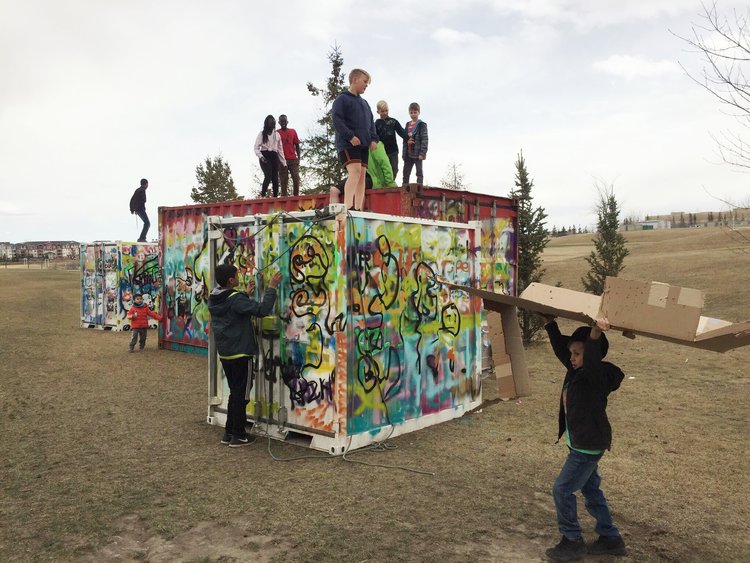


The shipping container at Ralph Klein Park has been painted with local wildlife adding an educational component to the space. I love the colours, it seems to have a calming influence on the space.

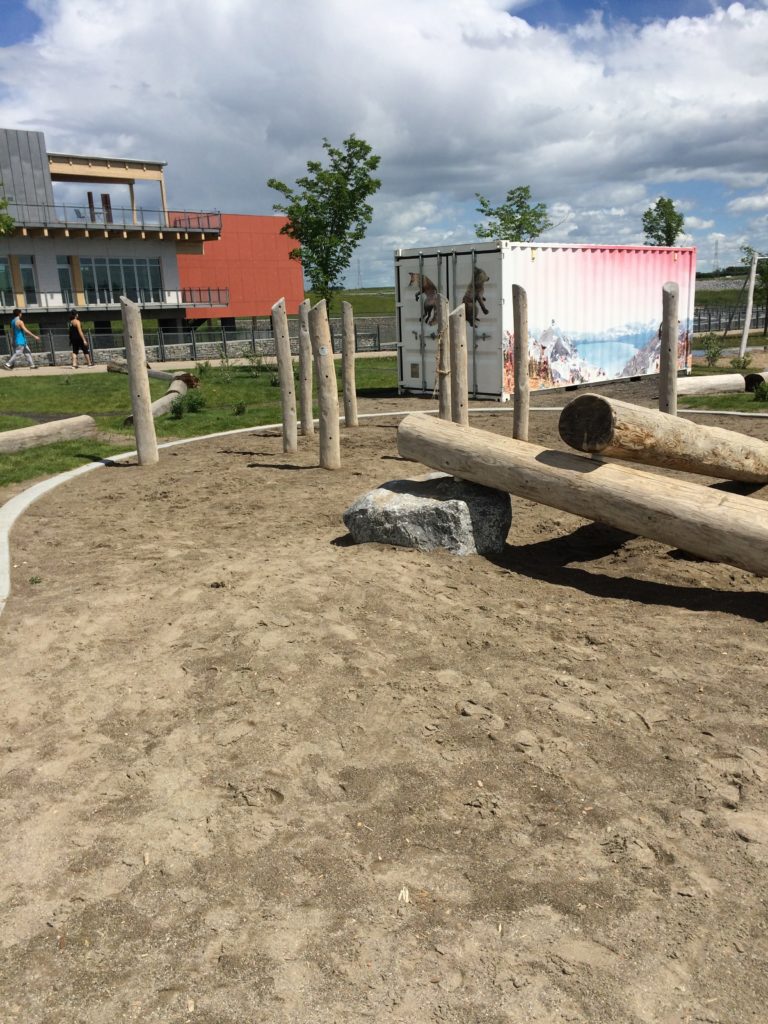

Do you have any unique outdoor loose parts storage you would like to share? Please send it along to me and I will add it to this post. I would love to have pages and pages of ideas to share with everyone! Contact me at christina@getoutsideandplay.ca.
Stay tuned for the next blog, I will be sharing a few simple ideas for loose parts transportation and storage if you have to move your loose parts inside after use outdoors.
Finally, have you seen my loose parts guide yet? Outdoor Loose Parts: 5 Materials to Spark Imagination and Curiosity. It is free to download, find it here.

